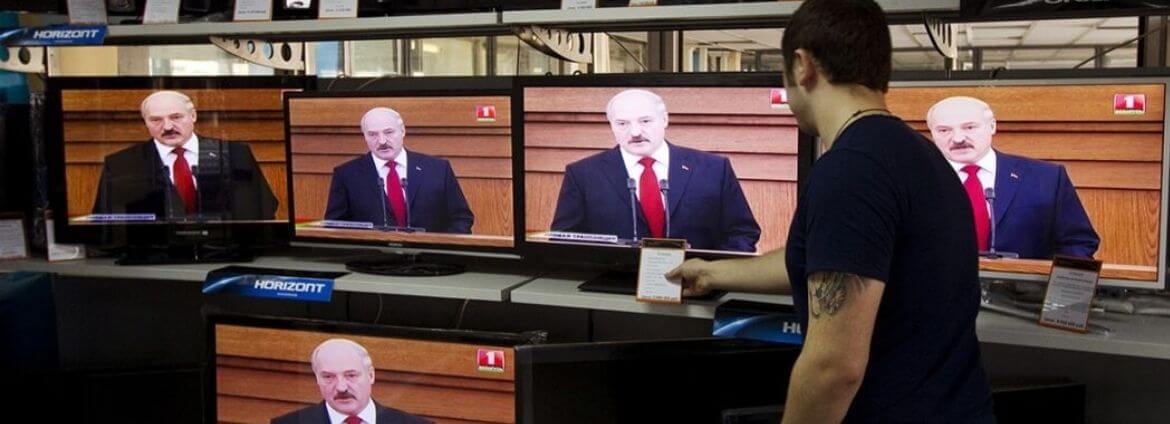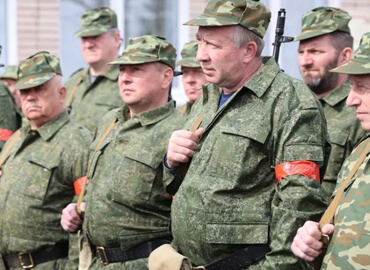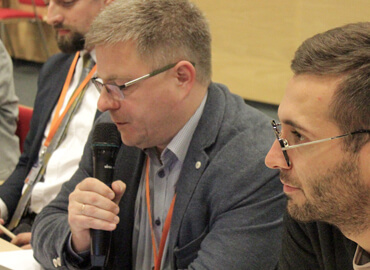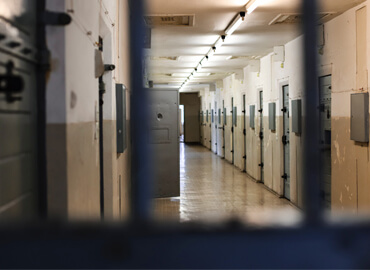Belarusian propaganda actively played on the events in Kazakhstan, using classic narratives about the aggressive West and its anti-Russian activity. An important feature has been the positioning of Alexander Lukashenko as the savior of the post-Soviet space.
Exceptional media activity
Belarusian state media paid close attention to the events in Kazakhstan of January 2022. At a certain point, their coverage overshadowed even the situation with migrants and the topic of constitutional changes. During the first half of January, the website of the presidential administration’s newspaper Belarus Today posted about 400 (!) notes, stories, and comments on events in Kazakhstan. However, there was no serious factual analysis and analysis of the events or interviews with recognized experts on Kazakhstan and the Central Asian region, in most cases propaganda clichés substituting for interpreting of events.
The wide variety of materials in the state media on topics involving Kazakhstan can be pared down to three main storylines:
- Events in Kazakhstan are Western manifestations of a «color revolution.» The main organizers are the U.S., Great Britain, the «Anglo-Saxons,» and, to a lesser extent EU countries and Ukraine. They used local non-governmental organizations, Islamists, Western-educated government officials, etc.
- Russia is the main target of the Kazakh unrest. The time frame of events in Kazakhstan is linked to Russia’s ultimatum to NATO. Kazakhstan has become another Western target in the strategy of encircling Russia with hostile countries. Deeper integration with Russia will help stabilize Kazakhstan.
- The CSTO mission was very successful and made it possible to save Kazakhstan. Without the CSTO, the country would be mired in civil war and chaos. The CSTO mission put NATO to shame and increased the status of the organization. The CSTO is becoming a guarantor of the failure of «color revolutions» in member states.
All these propaganda narratives have been key to the description of the events in Kazakhstan in pro-Kremlin media. In this sense, the Belarusian state media once again has served as a kind of arm of pro-Kremlin propaganda. This is not unusual because on Belarusian state television channels most «experts» commenting on Kazakhstan, as has become a tradition since the end of 2020, were Russian (not even local) propagandists.
At the same time, an important additional and distinctive message in Belarusian state media was the creation of the image of Lukashenko as the main (or at least not lesser than Putin) driver of the CSTO operation in Kazakhstan and the savior of post-Soviet countries from Western «color revolutions.»
It also follows from the coverage of events in Kazakhstan that the question of postponing the terms of the constitutional referendum in Belarus is not on the table.
On the contrary, carefully selected commentators mostly promoted the idea of the importance of the intended constitutional changes, which are designed to save Belarus from the Kazakh scenario. For example, according to Dmitry Baskov, who holds a parliamentary position, «all these [constitutional] amendments are in fact guarantees that the horrors that we saw recently in Kazakhstan could not be repeated in our republic.»
«In line to adopt a unique experience»
Belarusian propaganda actively made use of the bloody events in Kazakhstan to justify the appropriateness of Lukashenko’s harsh actions in 2020-2021 against peaceful protesters in Belarus, as if Belarus would otherwise be overwhelmed by a level of violence like that found on the streets of Almaty.
«Now imagine what they could do to our country. The same, and maybe even worse than what we saw in Almaty: pogroms, arson, murders. But we prevented this in our country by showing the necessary toughness at the right time and in the right place and helped to avoid a much worse fate than Kazakhstan,» says one of the columns in Belarus Today.
Several commentators have also consistently bestowed on Alexander Lukashenko the image of a leading specialist in the post-Soviet space in the fight against «color revolutions.» According to one, «on a number of issues, those in power in Russia and Kazakhstan today will look to decisions made by Belarus to put an end to ‘color revolutions.’»
According to another, «the talks between Kassym-Jomart Tokayev and Alexander Lukashenko show that now everyone is lining up not just to talk to the President of the Republic of Belarus, but to adopt his unique experience in protecting the state.» From the same source: «Alexander Lukashenko [in the situation with Kazakhstan] served as a kind of peacemaker in geopolitical terms. Peace and security in Central Asia and the East depend on the actions of the Belarusian President, among other things.»
It was not Russia that extended a hand to save Lukashenko at the end of 2020 by providing political and media support. Or maybe it stretched it out, but that does not matter anymore. Belarusian state media maintains the opposite is more important: Lukashenko’s actions and his experience in the fight against «color revolutions» turned out to be Kazakhstan and other post-Soviet countries’ salvation, including for Russia. Moreover, it is Russia, says state propaganda, that is the real target of the hostile West.
Lukashenko himself gave the impetus for this image. In a speech at a meeting of a CSTO contingent arriving from Kazakhstan, Lukashenko stated that «this entire operation, down to the details, was developed by the two presidents – of Russia and Belarus – within an hour… Everything was done quickly and decisively, without hesitation.»
Based on another statement by Lukashenko, an attentive listener could deduce that one of the developers of the CSTO operation still wavered: «The stakes were high, so we decided to intervene. In a conversation with Putin, I told him that as soon as we land, you’ll see, the situation will change. And this is what happened.»
Moreover, against the backdrop of the Kazakh events when speaking in a Minsk church at an Orthodox Christmas celebration, Lukashenko talked about the need to return Ukraine «to the bosom of our true faith.» This looks like a kind of claim to the position of gatherer of the «Russian world,» which, it seems, is already assigned to Putin.
Anglo-Saxons and color revolutions
Although the Kazakh authorities themselves have not yet decided which «external forces» provoked the bloody events and did not express any criticisms towards the U.S. and other Western countries, Belarusian and Russian propaganda went out in front and established the «collective West» as the organizer while outlining the details of its plans, tools, and goals.
«Looting and violence, explosions and shootings – this is what the so-called peaceful protests turned into. And the supervisors of this activity, who are sitting in Western countries, have now reversed their position and are trying to disavow themselves of what is happening,» one of the news programs of the Belarus 1 television channel said. According to the commentator, «Another point on the map of the former great Union has become the target of a color revolution.»
«What is happening in Kazakhstan is a clear example of what can be expected from the organizers of the protests and their foreign and overseas coordinators,» said Belarusian parliament member Igor Khlobukin. In his opinion, it is the fixing of the All-Belarusian People’s Assembly in the constitution that will help Belarus avoid such crises.
«Having Kazakhstan lit up for a long time is the minimum goal of the collective West,» a story on the website of the Belarus Segodnya newspaper categorically states. To save them from the hostile West, it suggests that post-Soviet countries eliminate civil society, calling it «a class of protesters and extremists and terrorists drawn from them.»
Many commentators in propaganda media are calling non-government organizations the main subversive tool of the West in Kazakhstan, the number of which is said to be between 16,000 and 22,000. As for the plans of the insidious West, according to one version, «the capture of Almaty was necessary for extremists to turn the city into a center of Islamism and separatism and, tearing away the territory of Southern Kazakhstan along with it, to create a Central Asian analogue of ISIS with the goal of undermining Kyrgyzstan, Tajikistan, Chinese Xinjiang, and establishing a link with Afghanistan.»
According to Lukashenko, there is «no big difference» between the events in Belarus at the end of 2020 and those in Kazakhstan in January 2022: «Everything was the same. Only [the secret services of Western countries in Kazakhstan] did not stand out very much.»
«Discontent is being fueled artificially, from outside the country, from the media support of infamous Telegram channels to the methods of fanaticism from ISIS terrorists. The presence of terrorists from other countries is already a fact. Four and a half thousand militants have been detained,» says Belarus 1 in a broadcast set to disturbing music and accompanied by a video of the riots.
The plan of the West in Kazakhstan was described in more detail by one conspiracy theorist on the Sputnik Belarus website. It turns out that the organizer was the British «deep state,» the origins of which go back to 1891. Since then, a secret British society has organized two world wars, destroyed the USSR, took control of the U.S., and is now undermining Russia. «’Deep London’ planned on overthrowing Nazarbayev according to a ‘Libyan scenario’ in the spring of 2022, but Putin’s December ultimatum accelerated events and forced the British to act earlier, which predetermined the failure of the special operation.»
Although the U.S., Great Britain, and the «Anglo-Saxons» are most often identified by propaganda as the driving force behind events in Kazakhstan, the European Union and Ukraine are also occasionally mentioned. According to one «political scientist» quoted by Belarus Today, Brussels participates at least indirectly through payments to terrorists operating in Kazakhstan for losses «they have incurred due to non-receipt of wages and losses associated with non-payment of housing.»
Another Russian «political scientist» on the television channel Belarus 1 identified Poland, Ukraine, and the Baltic countries as the coordinators of Kazakh unrest.
Anti-Russian strategy
As with Belarus, in Kazakhstan pro-Kremlin and Belarusian state propaganda promote identical messages stating that the true far-reaching goal of the West is to destabilize Russia, that post-Soviet countries are being used as auxiliary springboards on its perimeter, and that for the successful development the state, and even for its very existence, deeper integration with Russia is necessary.
Many commentators for propaganda media agreed that the bloody events in Kazakhstan were engineered by the West ahead of the Russia-U.S. security talks in Geneva. As one explains, «Assuming that the crisis in Kazakhstan could not be extinguished if the city of Almaty were now in ruins, then Russia would not have a position in these negotiations. But everything turned out to be the other way around.»
«On the eve of the Russia-U.S. summit on global security issues and the establishment of transparent and clear rules in international politics, the U.S. took extreme and risky steps,» agrees another expert.
Member of the Belarusian parliament Sergei Syrankov is among those who quickly saw through the organizers of the Kazakh events and their plan: «It is the weakening of Russia as one of the most important geopolitical forces. That is, a country that is one of the forces keeping the U.S. in check from world domination. And the tasks, methods, and scenarios according to which these events develop could be completely different depending on the country. For example, there is one scenario for Belarus, and another for Kazakhstan.»
To prevent such tragic events from happening again, Kazakhstan should «move away from the multi-vector approach,» deepen integration in the Eurasian Economic Union and make relations with Russia a priority, advises one of Sputnik Belarus’s commentators.
The CTSO as a Christmas miracle
State media commentators did not hold back in their commentary regarding the CSTO. One called the achievements of the CSTO contingent a «miracle» and according to another the operation of the CSTO forces «opens a new era in our space.» «This is a new stage in the development of global geopolitics and for Belarus and Russia in particular,» echoes a member of Belarusian parliament.
«There has been a break. There will be no more ‘color revolutions’ in the post-Soviet space. We have demonstrated the most unique means of dealing with them, no matter what they dress them up as – peaceful protests or an attempt to use well-trained militants,» says Vladimir Solovyov, as quoted by the Belarus 1 television channel.
«In and of itself, the operation from a military point of view is unique and fantastic. I think it will be studied in all the military academies of the world,» one Russian commentator remarked admiringly on the Belarusian television channel STV. According to him, NATO is still in shock and is carefully studying the features of such a successful operation.
Following the arguments of state propaganda, Lukashenko, as a co-developer of the CSTO operation, shamed the West as the engine of the «color revolution» and NATO specifically as an opposing military bloc.
This article was prepared by iSANS specially for Reform.by
Материал доступен на русском языке: ГосСМИ про события в Казахстане










